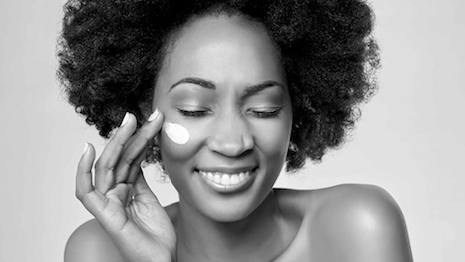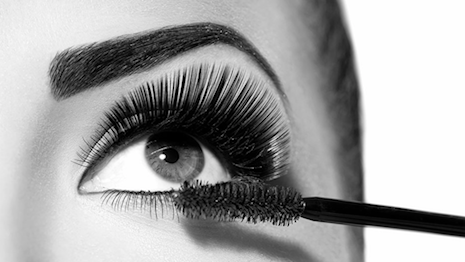Italian beauty brands have embraced digital strategies and a shift in values as they continue to recover from the coronavirus crisis and look to further their foothold in the United States.
On Oct. 21, Beauty Made in Italy, a program that aims to promote Italian beauty products and brands to the U.S. market and consumer, hosted a virtual panel discussion focusing on the impact of the coronavirus on the Italian beauty industry. The hour-long virtual panel, moderated by executive beauty editor of Women’s Wear Daily Jenny B. Fine, featured three beauty industry leaders: Fabio Berchi, CEO of SiFarma and executive board member for internationalization at Cosmetica Italia; Antonino Laspina, Italian trade commissioner in New York at the Italian Trade Agency; and Amy Parsons, CEO of Mozzafiato.
“Now is the time for the brands to really embrace their own storytelling and look for these ways to tell their story in the US because people are open to it right now,” Ms. Parsons said.“They're looking and they're listening for these types of products, and these connections to place and that’s what Italy has better than anybody in the world.”
A discussion on COVID-19
In response to a question regarding the Italian government’s response to COVID-19 and how it has been supporting businesses within the Italian beauty industry, Mr. Laspina emphasized agility and adaptability as major qualities of both the government and beauty companies, especially when smaller companies relied so heavily on face-to-face business.
“For [Italian beauty companies], participating in exhibitions was a basic strategy, Mr. Laspina said. “For them, it was indispensable to talk with people, to show the products, to give demonstrations.
“These small companies were not big enough to count on traditional media for communication,” he said. “Their agility and adaptability is proven by the fact that they are reacting in appropriate ways. They are participating in webinars and digital events.
“There is a kind of acceptance by the Italian companies that they have to adjust to the new situation, and they will be coming out of this present situation with new qualities and will be ready for the new normal.”
 Italian beauty industry has shifted due to the impact of COVID-19. Image credit: Beauty Made in Italy
Italian beauty industry has shifted due to the impact of COVID-19. Image credit: Beauty Made in Italy
As discussions concerning a second-wave of COVID-19 gain momentum, many wonder how beauty companies might reapply strategies from the first wave to the months ahead, and what the implications are with a potential second wave of the virus.
“When we wake up in the morning, the first thing we touch is a cosmetic — it can be soap or toothpaste,” Mr. Berchi said. “Our first concentration in the next few months, especially if we have a return of the pandemic, will be to develop the culture of using cosmetics for personal hygiene.”
“We must also continue to communicate with our customers — we cannot leave them alone,” he said.“But we feel strongly that the capacity for reaction by the cosmetic industry will be positive.”
 Italian beauty industry has shifted due to the impact of COVID-19. Image credit: Beauty Made in Italy
Italian beauty industry has shifted due to the impact of COVID-19. Image credit: Beauty Made in Italy
As Italian beauty brands look to expand their businesses and permeate the United States market, it is important to consider how they must shift their marketing strategies and brand experience strategies toward a digital model.
Ms. Parsons is in the midst of launching a new retail platform, MozzaFiato, which will exclusively feature a collection of authentic Italian beauty brands curated for the North American market. Due to the pandemic, however, Ms. Parsons and her team have had to adapt and utilize digital strategies to create an immersive online experience for their customers.
“When you see our ecommerce site, it is built as much of a travel website as a beauty store,” Ms. Parsons said. “When you go onto the website, every one of our 17 brands has built out their own brand page where they tell the history of their company.”
“Some of these companies date back hundreds of years, multi-generations. So they explain to you and educate our visitors about the brand and where they come from.”
“Once COVID-19 came to us, it immediately forced everyone across the board out of their comfort zones,” Ms. Parsons said. “All the brands we were working with had this mindset of being open to new ways of doing business — new partners, new geographies, new ways of putting deals together.”
A beautiful future
All three speakers seem optimistic about the trajectory of the industry as a whole, even in the face of such adversity with the pandemic. The beauty industry has made significant strides towards embracing and exploring how digital and physical in-store experiences will shift permanently to compliment each other.
While the beauty industry, including luxury players, is usually among the first to embrace digital trends, this has only been accelerated by the coronavirus pandemic. According to digital marketing agency Tinuiti’s “Beauty Industry Trends Report 2020,” the sector remains resilient as both purchase frequency and spending are up year-over-year. A quarter of shoppers have also increased their online spending during the pandemic, but high-priority purchases have changed (see story).
For instance, e.l.f. Cosmetics began its digital transformation two years ago when it shut down its retail stores and invested its money in the powerhouse of behind-the-scenes ecommerice, digital marketing and fulfillment to make the customer experience as smooth as possible. During the pandemic, the brand saw a dramatic shift of consumers opting in for more skincare, with sales up 66 percent (see story).
“It’s going to be a seamless blend going forward between digital and physical,” Ms. Parsons said. “When you're in the store, you're going to be interacting with digital and when you're digital you can be looking at what's going on in the stores.”
“As we are forced into the digital right now, when we start to enter the physical again, it'll be much more seamless and people are going to expect this from their retail experience in the future,” she said.
{"ct":"Z+odZApKZ9a396TZi0AtcsGwBtBxdCW86lpdXTJjobvjdVg5HJsvTX5sNa0Mqob24gAvQqapD6OEyklMta1o10ctzBNBIHV8BQh+3lZpYwIt\/QiErY78LDiFDkk5j271k5QO3VC2c5IFhcUbskxJavrZcgyNhcTCJfWO+SgjzV\/gtiGf62vS36j\/8h\/FCJ9ELvuLxWOK7ywz8Qnu12VIqkVvvYBhIJCPDR6tjXKLyu+F6eDvqaMNojv+aix5YU2vmGG2Mup11Cu3A57wx45qz61N9YEBweSjLyklfJtfJg4N0U1sQ0ftu2GYUchgvT2gZJLaaFtcXrTrgKK9J7E787SQv9koBkavJSv0njHmkCWcrSWniXjLhsyj3uCbqLaMaV66WGHYgbZOLHr4saM9x6QThb4fZppM51S4KaJFQ9kGsd7rFXcSzEt2TycIZwX0m5Ftbm5XjspbdKgkJi\/+kES6GXzFS2TLZWMMUNuwufKNuz+RGrDyC58zajJUfrzfTfuDUQ6OsZ5x5hzju4+2nOieHaJbq7kWrFM\/bIT0dfYgEiA8I1IylK+bF9xOludUKjyCVSzUVMrmK+JtYdTzHWeppcZS0QQlypQ40NwJHant1pmZUzsrwVJNmcipo31P+XBE+cDiyUnPLAQ9SLn3PfmiZXSvJG6i0fpTu0eKc6FfMV8uDicIF\/JHm5Y5uH7T3lg3yVVC3w7v1q0EZIWHzdclctVWIeBDlceb0nvnO3x43JnykB3vVWZKCrQRZOkDrO3VD4IKSB5riQLglBdD6lLlv8Uy6+cp0JO+To58y2rOnd\/9L8rrJ\/6QAZxLLoZCx3bBc4MoaW+RQl0gKs0kRRZW4qilece9\/vvGhPn9SWvhyZUXgbdfHHeJTBYZa+4\/xq7Aoq8aC1+ZE7fCF7YATb6XkrP74sAloe4z7gfhKDm6PtVkIM7XoSThu6aZNn8gDrhdX1F\/JY2nN8V4SgWWG0m9dv6Kqz\/WPnKRTOj5j9xYrayNRAI+aPimI40jQSLkMpGJasKd+S\/rI8M+p2mPjup4JOZHa1VGkXqpKTPIW8oBuLn43FC2LYtSHTLEpwz5WYFVVwqhRtF7dEn+z6tQQRM2IwSaMZksTW9mkWNoMYeU6Orkoe5QkaXSAZxYq4a\/MuYrqQKsKZzmNTylftsSMrzS9\/DRWzoJ6E21s9gnSNm\/EbJOCqe02qXqpTWTkBPn8XrJU8k5TGQNeW+\/mLPeqjpSmIj+uYmz9dMhgq+9H2taMQnTG9uqu20lxnib2x24+TliS1\/4J8CAX9D9pxMahvuwiF\/X\/Vtpj0G0gloSqIBIZS6rKDAosGgkRF0anCiD3p43TGEYIvpyWoMad1rAzFRr\/b+D2aEjrMUoZLEqdBdCd5IX7uSOYaZdjgEeQV5zVZ3QqlrhVAGTMh5MRFLJVaTNhtUJN1BEa5kG\/Fw51d9yB95Nq0WHfW8fdg00+XGQFInn5ZJ6tkEzEjZOWxhxupV6tHlfve5GAq8SLD+9GCvutiQ9lYn\/yr7T6yXJBr+wrP5Dn6BswtrtxWw20qPgxIyLWnMZA+e+8yBMPCuA3qYSh9r8sIIzBUcHvvhKc5Z69PCZUgqKIibBzE4tXIhtjcLmY+7fx6mEvIHM65BRz2tP8lC15jMUXL8EzI+ko1ZDt6IalyRRfp5\/mwMwlPyhZ\/zRgsemDJxedPMZTEp7b\/xTrE6hd6\/D9x8UnRkkuxlBRZhTDSq+DuvLTqPhC\/rCDAzYUU72p5lUpvZjLurRIEcrtg3NrWag\/LWqJhdzHxapmPN\/wZ7\/BGJSrC1UqkgwkgIIL2n3dydop\/FZGDzRh9afDJbguSLKM2z7M51a0YKGj2JhSJZOQKWojrn6kVjqItawW7ze4SbBSBW8PwN1nKdoSpwV6m4DAIddUVC2EE\/\/6ynmXLDr8GqmlCfvazRGnzgNZWGgcBWZs6kfgqS+SVTqbIgrd0i\/yLuAGqPPrpZsUi0oRCYGDzwZZ3QhYVnutW7Y5AtMFTbo0Z2TdsZAuL6QVOHS4jYpnOAcZC4pn70FWAP7Df+0vOKYw3MaH2qnn\/1p9puPBL05EbxpHjcuA7uXRXPHKD+ZYWne871rCX2Pt++xgBJEVTO1wM633nKYTfwr09DYSxuMM++MNfbfl4H6OcBNhKZ8SBgBm0Nb1I04WRtISp9hmFclGl1oTbILr+7bTJ\/bbfc2fbGl30JUnbaeFDMTnS+iwmXvi4tCs6Wo\/uW+cNVKvX1qhWJTufiIvI9McAry3byyWixa0mPCKeHB0ZqKQU7uHnK3ILHsBIxVhoCl5NGDxek02uuS48dUIapkY4G3Ixt2UnZDtWTmDVRfMBkPF7N4ake5L2uY8KD1kdWYZYO4KVsReZj1f\/Df9dDhduJFpjktQmtd\/5QYQz+hvrvD4PQ40T7JYbrIOlS2HVXOt6lNxxGO1TDmM3RJgHpqgoVI05Gi0avG+61N\/7fmLNEYO1C8eBRwCNs963r1yFlsGjnX8yzvdqTCRWAMgRD\/7MU0KslSB7teAbBJ1kBsy7wDAp1bUfggB5yKDRsCShY2n+U7\/GpfyUIS64fqZMmNo61u+8dp63dmMBqluK1pEv4SRcX7zVslhFVtkbbAoChwXnEon9kJnLybEdMycGqckuQdv\/Y18F\/ZWkMZvY11mXw3OryfdQfxpKf6wbCphcRB1+QzpxoiECOZJqCitt9AiYjSinKn7\/WaqZIpa+\/2sAVkz27+ee\/bBE1MqoGZgZjd5aV8BIkNnBqYfuOjL\/rDYmqVX7CXq9TlWe2uYJN3OWwEGoBbMDkqO\/mnbpxxeqHgt\/XqGurtBIFpkBB88iuIOyle3Ov8fRC\/cUHUVrGte2CSbWx6mxsZjILBRlhNLGsz+mmk6BUHyNsyCiELtzxgwLjFWHbqwLe\/4e85eawgniXDfl7QAj4xPKNM1u72wN6gbpFJaiHioMgeE+VFU4jeslKAxeLCT6D6kYdKbjR6oYNVVkpgqgD6b55J6IlkDkUhihZX\/XPDXsdgNKQMVF5EJtVQlN3ufIe3m\/uY2wnmQkPdQuJ5G73pDK1tMkuqKOGY55k7TrFVhqOJlujTvJYkO4vm6+oyeq6PXUPLdvN+jxt68TXn8Xzw9BMX6pSkXB46Eu+7XWOVnbFabAAm+o6E4ABjzckrrI7mTX2zoNXcZVnjJ4bMCyappSIU8nga6IsOpde9+a4OCT+9GZ1GXm2gHcpD0\/mV13ZwsHnESVCcb6DzPCvICTmdb0Pb0p9DgmauMyTlDz5UwHuz68ErDKaUccDeKacYMjaYMfGlgFz50VyZbH3JZx4OTCEqeKBqJNcFhd1kL7M9dEsGNu41o3lI7BukalPD5zSlgNTGj2p9CT0sL\/2B+zKVamQflKKdLuWgMxtM8n0X2UdExXUbAY2TNhivg3tKHCa8ldktHBwj8z6TZBOQiwWSiEeLnnYE\/Q7n54iH+FBdSe+YdzB0y9FdCdGUc9HjBlp5C\/ivaEXqZvT5qM8xi36aU946VH+fXtY4XwwJ+LWrBPCFHBL6YzcV3tBB+6ijUv2seeudlZsblYYaE+UrNm1gD914fqdCsGAuljWQ+qqT5Pj9vpC6nRtZsE93xm+FDqDSdRx2zM8ZtNjvYqzMvOfr1Nc+DwWvwP3juJxaP06NYGPoI3XfLagc8ccZxSwOccAeh4e4b7jm0zPJWiRfbMZlEX7oDPDlO4SPWOYuIUjNgLcvANgXog9+0bGWD+qGgg0T0W5ELkH4OUGRg6uXckDmk6KDzQe7Gx2WzvWQ2OTfYdZXQOA0lbTFOoWCNeWV0qXCgaHkNipW6VXXcKrwf4EaMlrLjUfPajLUAy4Mg1lmFn44mgiHVuNbQQ5SEs3XzfwNO4e5TKM8bHTUi5pddm8HZiLJavXdxINvsaX\/P8\/x5j94LKhSE4w5ydbXcJOoWmROCFHtwjsz4ChcKHcUXUqYTFbh8q60YrgDGJ+2FgOBdXUct0\/3lqKACRRRz8zMya9HFMKezLfkS6k3GjBqInbcI6ycvgrqxGQYC1emcwB8gMrvIPt0ff8jR58Fk+N14jrgruHNRuVV8LwWY+VB7sM7w8zCX6IdrI2YqTk5XWRiKQp5OTnL2WmTXapFAMmuujbsjgUS5X++UTcirg6gJZFWWNGMoZDP0\/drucqe9hbtamPjbLdAAqe3eSn8uhHNZVFKH8QkTuhb1yMD9ipLww8ZrWQBOGb2Jt6v2wDjfvuzh9uRmcXfvRQpSgCo07HOdofHL26oGL5jBhp1J1srWgUTACXZEPOYrw8f2OR5WqqtzP0B9BJAhyvtOj\/bGfLAIEBXk4LExA0bJ7aIItyeqmmiKlxUKLcAo2e1dBma+bh0hUPaqXjiN7L5poBTFcBdZGh6ZMdnEJxqSjhcdUnE3NgLu2YVhHovk0KTI8ZzRD6x+xXWG+jHhvLc0trReRmkuCgxUhYE7KQUGBh6w4swzBNuS5R5A7Ez3vXXVWM4jPp1NJMhgP0Vn0Lyw2lt8FMpaRSCZ9SRHDZ+uBFVoCy\/Im+ku8Jt9ms8TehQajp6raUdjO4JGp22KWq7yxJsWNJ4eMOhXB4Cisl+XecnBH9Ph000caXrl0F3x6MA9NOUNunKlhHIKaNOTepzVcw9xQOm2zUSaoEl1TwELUBsUP5ATwGSrbPGcUUT+Q7k0mmuhfFPjGbGPsduyc33mKFUqTwcsSocAIKeqfvmoGgZri\/H7+cs8DeybndRHL+cCwmm1jttTYL1ESemeUQMONg4IL5zRz3dDoOgquJzVIE05D6N7H3tugH\/akXWjZPbB07OD4ZbwjxGrzTbgqrGiV\/bhMv9oj4fBFZFdEEtxfqujz2pOD90\/CvL1DP8JKoVHg2m+nY8PrNworVHd9XkgKiaxia6YFU+l7l8Q3YJ6DwvPO79RZNGP1+9yeCTE1TaLnqxDxAXNQvtq+szcb1Kq9IZGjN\/KcZYpau8toNV5wMl3wZzYf5NtC\/G8PTMZ8yEMemoFyArp4CXbxkcaxptiDOWte5VlKg5VvssPp0SXM3Wvyn7WX09i+gRSvZJXMdU6yNxrg7nftQZ9E4oONKb1Kg890jjq6lJ9zXlJWlBl3Y1049SuannlVxc4t5gMzytWlG9HcQoxg0B6BNLWWpdHyiVnEt6ZtYizdqBQUavMENcF\/HkhNC0a+GhfQ\/hjBychq2fDHsTnPS2wbqUeWnLpBymlKAt+dHbWxHGqcyHH20Hy7vOFKfE\/4hNqFXChnpPXV2n6YQudbeqXcUV7OoJGC8qbk1vOInlrvIZsjih7MQ64zIyRIUTXadNbSxcFNcXJprrzduS9dEdbt1PsIXdbEP8IEytKCEfhtLQezzKMFVcdFrtb9KXlyPM4h4IDGEoZPTUR4X6RVRQ4CdVahU7GxnsvCWuRa3CDGou8c0d4erC\/TcFhpglxeeEIEWPCZfFJgM6C4dUoc4mFzMFpfydgyrvFXXljEHIhCJ1xSNSvT9XH5lZ1KKXUBW\/zCZ4tx3soVW02BOuCwAjc8mJrPa6sgATc2vtg3VWgetRvxxEuzoC20PmD3F+L0lv63t6rq4QH4atwxE\/WCUTKxvMv414aTN4mT\/7qoOQxHj5ojMYsl3KFAf9eNXKn7HgGuanf7xKjLhdZf14OYB4nlF9cI342doFOUupPqC\/AaOSI+DAneof2lyCXYA92PV3U2if7w6YQCjqCRjpw647GY+LKh+O6HshukpwROSjwlC8xPi\/5a9OIZqDjhI+Lok+\/SzN3wNtCrLZZe+1yGQUf\/W\/zxXptnio735hYZ351ukmLOmIlYUosW\/ToP2+hvxC+p4paary40bFfp9wLwWSbQEamDYjqoznXqbf8xber5CmEkNDMb23y4nko30MR8dqrFYWw7cNunjGyYtCCo8D8yz7wKrKhawxCd1R7A3uPNx9NYhSmOZwR3pSn3m\/wwwwO+b7Vl08c\/mLU+fsasCxqnNKrIYklEtlkHzn\/l5UXVBDPLiYz2xhf\/D+n0tUNy6apTUHUonOjbNWdscRg\/0qHDXDepKKg8We\/1do+lxDl+PIt1AjXvp6W1sJeQVzI63MSLo2aR\/Jift6FsNbtrVe7rZBpkHR5UHgzQ8TROmJyv6sYbz4WvMSb\/YsneomvUBzuI+0K3IDViOIxm2Ipb0sM\/Xd8ZOsivFfR5H8iWjU9Acz0XKTIAdjck7\/fC01Z3AMDgVvTc8YkcrqrZMy0iIoUmuyV15756lkghRRuIyvszMlEGn9ixCuHEBnSyzl4fam3LvNa+QktGlwHr6xpsjXS6PmFUaQbd4vu9rbXUeyYPeyk549vlzwaT4oBpYPM2c3C9GlJEYll5kaCY9t7etGReEtKLGWqUU6ytACCffSQs2laIbXnOWkhVCfdXTit53rCy8s9TiVeSGWa4AhqofA+2feD3dy9\/j3R33+jTvudtMdfelxaV\/9i0y8gbmbMZVv4E0FywFQIwfv2MU05vvdwOQUvSr82pWv4mrtMelNEkWi+sHb\/HE8tCI8rYva4QvHqReSgpeEU3sVLeFqzkPJQOTQMQrRLA7RJXdkWyd4KTI9AOXmgCyCGEuOqf+TmgcXrZQdn1i2mWcmzFCkWZL8OKZMJper8dpPQVRxyeS9UP\/FMjyLkX1\/rOGsQE3r49apm\/X4j7xn3avMarSPES6cDWa1n0B8l7HuJcxkv+GU1JicRhenff+vXqMrfd5sb2U48gkdlN0nfmuReCDeAlSy6mFAU1fchlp3rQy\/dZ4soBjrJnR3GGsQha0orTrUPdxaCemkhzTiuSfoXdmbXeEzcBSTxwW1ALUZhfNrhqlFYKZXmDYqp+9bEuEjKZfbWDpAIbK5S6pxgr+w3TRCNI3waVeWph2qTUZC8a0SwNBnhDEgC0Y1JCQMH\/KFJZwCJkPeNJJ\/p+K8TdR2TdQZspWx70pjl1zpj+4XZjeiPZdJJ2w1wl8ICL2iBkS9O6+MbN9SFYWwZ3b5GvGkZzEJCsXsGjWeSXW90cHg5QfAhEkVItCpIeKQMgH4n+qdlFBvVZq5iMkGXmgECU5QTIp8yKH4doQA5aHHg58rM3kNnL\/2Z4sCRd4ESHo5s40zvrFXJMha9Rfx1c+eqkVK3nO6NELQqty0csuDmnI3plmo\/GGZ55jK8w2TTitkJzxHPnl\/QSTt11650yRLQ0\/S8ISuxYsVBFKh21S7eN8CVndWwZ+k+D1jS02Nkq4YL0jT\/VxJCxvM+My4xLl4hD1A3wfqFJws2ORsQ1Y32qqQCrXy6Y0HpktnCfnfGZP8t9xGsMoSvJAFGifV9pjNf8mrvYDwmmRXvrhnvSvR4bDrn6ELuDh8e\/MwQi45RVRQG1IORzg\/EZG7lHw0B9ufSscVaC2dP8+9NKwfCmWSu\/WMZtqpAPB0ca\/bvyOCDDkHcfdmYy5PF1t4KoxhwkMDIEIoShiMr98ASN0qQAU+RJCpILe27HCvQuKa1LNVPWoWT9YtKAcdWZbyxhueHqKBIliGAyD9DyovcexmAHjRiCO3T8ziqcob9m7LU69LrkzkaIZCP+MDBd7P3Ylz7Touyd4sQIGFOaF\/xcZvwA9EXbqpEr9EjQZ77wG0OtqiIeIGy443I5iI8SJ0fP5iS\/He14TWGIAPNEmgkQe9b6\/o0SEmL7JN5coTpW9djJMUxl9pnKcR2LST8o\/CMdfq7QjMDujaMVtCcpmqQDnXxq8C2nDO+sWOizTKBjeJs2Eh5afPQU2kwfBJzDUkU5hsD6jnmj9wgyswKMYkK4M\/oKIZOA++u7pPQqf8lHLOOfeaBgdzgy\/fLtDuL8pgDQ1TZuGamQnrqfHJOTbVhfcfbcFKEx3SIDgOAzUGe3DtN9uTdCN5BDoFv0+NiJhrTmp+oX04R8cJBMKNjihgYmlRbWECubpzK4KYn73n39JX2V0sH8aGynEkJMZugj421HnJK+YWe10dsUV6SUfsXSPBIga16zFb+Nj3prs4XMXJ7WgoIHD0E7EONxFYm5vwdTZLhbCoaXiZBD\/osI9OJqs7i6h7DsDm4bnr\/8K2QrY4nROhPN+behLOCA7zMRd7iqhlLPrYVORG\/BO4EWl3gXVqc13gjvAYmsdUuI85WsjQ8oA\/A439N3kuk5yahAMx25cgDOkiEEd1obnWVi8dNSARSt+qiw3DV\/fd9\/7y7B0Op5J5F4uzn3wBxTE4H12RDfSjtlcEaprvRL1c\/5Pu893jTz47NmwOZBtlkuW0kVXAygjPUCRzdFSWCUVViOxRvyfmS2890z21WOrn3mqScemOQWMXO1W+wSfiyfGiyS6YT\/www\/s3Gtn+4bPYjrRpMwpGyppTsnp1eEvb4whnRkIlUnFYwDzBz0w0nUIQ61ZTJ85HMhCFFbBQ1DV5RRpsMyl5IAkRsRMq\/NEiIdHYwKREhh\/6V45fQgs2eD\/SmVZqVT2YgW1n+AUSYFR0RGxBctAzEFTWcHhaC91XYuG7+PkkA9DL3eXQVvtoXL91LlIiNYQzjRim+3d+51EOBOyJzFbBo4MYWHJpTNfTqKiIO\/TjuBQZ0UM7gBYd8S3ZiUHTd1x4BudBPjZ76A\/AyzPC6ctISbnsiZandByxP8YnEMEV2j+VJ74Lknxn5\/di4BZCBhXbROqvbWlS\/+6BBERxNfpy2F8ve7ccflhMD\/XDJcRDQmvP\/Be2S2gLUq95lN+9Ra0nfFD0lFKyqAFf7e1zsMpmQvrbOgSBGPa5gdEph748s1hAGgkZljXfgFLj8gKQ8FHoyXl1\/uNVSyza\/S4hG7IbdbdmbHrgzHVnqh4s8HBe2GDHvJg1TH2i4NTsNNQm+lkOT+8kR0aDSueUpCSzB76PJd3+IPOaQ8qF618uat0mK9Q0WNUTL2v1fNG7XkzKRWGo6vKfdzp1HnXjLtDrNICMM1AF\/\/GdcP6Us7cfUYdG3k4ritTggolocHZCftIO78JRwMydxtxkvvtHE4QKzNBygZIFCrWzTVkl0AoWtZMw5D7AubkfGEr\/XiRDcSOkDV2t\/BzfSubx2I44jhkz1MJFH4aVrH8EuF38S9SEGlu8UwGkpldfDwUqKQb2DGdPX0nEl+ccj\/LuL3dTqWrwHnpycTrVrqBY6BAWDaE\/zSeFjCI4iV3hfN\/hLEkDOT+crh8nIERlygHi4ZX9nxk8OB8219lSe3uJY\/vTtSqpGiRCV7MrClUWMmv5xlNDuDck8FLlj16N5D5EEPJMrKV\/pbqHcneK7A5zdW5CLKXAuJiQIh1NeR+d0eK0SybfhSqt\/FwAFiPGNhKTgaV+0Oc0Raua1ObmYWrL3+td+88qCC+QpciYv5FkKr6+x+vTXwCuJXYZ4xP\/G6vZkEU3bAVqdLbPY6EqWsQkBtTj1yL3FtL7qwjUF2V15\/ivvaYhieURQ4cuSC06guDr\/CGBaER\/57o5bSHHjp4yijhGWmi7c8KT4U46mR5unzhvJVh96CDClC03R6lrymNwCL4QfW22w9n05ne07nFhXLIk+LGEEfrOLrCbLObNSS2ZtuEraadIsFFVXr1vk9tD4fVdYDCvsGyPbTMjOFxRWgpMEtdx+22bTOlItxOkbF7a5SYN26KvmQvZhS4fJQR7oVqUhhMRbQ3kGcl3vjiwch6ECB03P\/4u0icA20+OPwA6ogxWU3Dg3jHd7m6f9+gbKwAH9aV6Cal\/JCV8F56Ypkq96qXAIW\/aQf3meVwHhllzaA7CoWQ9Lj606IxVzHM3bHM5A95PIKtFwbkSaKthvkMNb\/kRxqkcLX5PqIN1bYwWdQwFSMDsyRKPgyXPAuHmkC\/lGbyqyAa0pRzDHUNQLoxoA2m+eQSqYL9JsGtVKDcRIPI\/jVjt+8FGY20DoDAettTDTmIr6N8lCClpt1+BDYIBOTnRFFh5oeVOOGg3oa2ioYFU5nj9d6nJr\/oWZRGId8M4IiOJYV6B8BK6DUImMKzpC9eeEUGm42Yhrr3WWH93jcAfv0\/0ptHlKJaq+sgyi0PDi7wCEdO7HAQx528BCL7tkUXalTgBhAQ6up6Te7dzj6ofATs7NLukzpei8GcTbNIf6Io+nLWa8qL2epRqIJ7CXZzsCAzxgH22iqVGKIo4oFDxFm\/J4jrFVFD7LfT3isOvhqm+aMgpCfxYKUDt55eJUto\/OC5BKojRdT+JOcWL8v1uNc6i5qssDWl9ZD908CeL62B3N06iyfoxnuZZdP0eAIQHldhkstvRv0idMKDLFZLJ17IaSibvZ2h9Dipf9c5gR9AXTlC8xsrpACWTjv\/NzbypLU0LvHM\/iAzOXy9TXvBl2xWPUCgqUTr8MIlYd75kF230tsPf5ikXJMWRHgRqyz3J6QQU5zvE+EcAY8fqRCcyUvCHLUUrw+mZ8y1B+3kCPlspUqMADhwqIZyAKlwSf\/d+CWp5Bm\/nCRBozjjqg530edh4aPxs6l3J\/xTu3Zstw7CRuy+ECwXQfWP\/VhoBrNk\/M9+AqVAD9ugP4rVBisrwfQ4Wwog69NkOCEl6a0vNewLkgO3MSZrjCInPIj1zQ1eZnC0Wo\/VccJcuMZf9ufMpYpVDCKnDy54lCObBsSPPUMY7wK+aVqokNyK9K6WA3yzytaSg9+3ihpAGrRTB606MyyawXqsyyo2BGj6bDl7aiiU9jDwDwSaz3VwlIflvuRymdohWbEsYyvqmB6VpZ3fwGP7A0NPmmMTNPCeX8ZH4gyDmeS7geLu5BtVyN8oTykm0TFRE6\/gn1iWcdPp+Ik\/2AZjI1Ev9LgoFduQCx06bCc0knOpqOfKN0t6Q+fJoP4wBrMOHMQ==","iv":"502cd2aa2b20bc8c671283cfc8c4f638","s":"986a7257453cb5e6"}

 Italian beauty industry has shifted due to the impact of COVID-19. Image credit: Beauty Made in Italy
Italian beauty industry has shifted due to the impact of COVID-19. Image credit: Beauty Made in Italy  Italian beauty industry has shifted due to the impact of COVID-19. Image credit: Beauty Made in Italy
Italian beauty industry has shifted due to the impact of COVID-19. Image credit: Beauty Made in Italy Italian beauty industry has shifted due to the impact of COVID-19. Image credit: Beauty Made in Italy
Italian beauty industry has shifted due to the impact of COVID-19. Image credit: Beauty Made in Italy